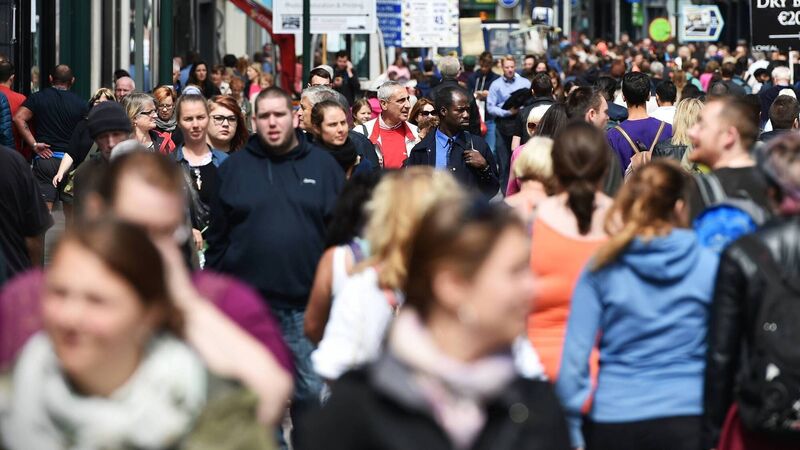Irish economic growth forecast revised up on strong spending

Economists say consumer spending will rise by 3% this year, driven by a 4.5% increase in pay growth, outpacing the 2% consumer price index inflation rate. Picture: iStock
Bank of Ireland has revised its GDP forecast for the Irish economy this year to 4.3%, on the back of stronger data in the second half of last year showing more momentum than anticipated and less distortion related to multinational manufacturing.
Economists said consumer spending will rise by 3% this year, driven by a 4.5% increase in pay growth, which outpaces the 2% consumer price index (CPI) inflation rate.
Household incomes will also benefit from tax cuts introduced in Budget 2025. Additionally, housing completions are projected to reach 42,500 in 2025, contributing to a 7% increase in core investment spending. Public spending is also expected to grow by 5%.
“The Irish economy had far more momentum in late 2024 than expected, recording an exceptional pace of job creation,” Bank of Ireland chief economist Conall Mac Coille said.
“Also, beneath the statistical fog, a broad range of export sectors have performed well, despite a very challenging global environment.
"Hence, we have revised up our forecasts for GDP growth in 2025 and domestic demand to 4.3% and 4.0% respectively.”
He said the risk to our forecasts remains a breakdown in global trade relations, but far more radical tariff/tax proposals from the Trump administration would be required to harm the economy in 2025.
Their report notes key export sectors such as business services (7%), information technology (17%), pharmaceuticals (36%), and traditional manufacturing (4%) showed rapid growth in 2024.
“This strong performance is notable given the expected 3% contraction in euro area industrial production in 2024. Export growth is forecasted at 3.4% in 2025 and 5% in 2026.”
However, it notes that trade tensions pose a significant risk for Ireland.
“[US] Treasury Secretary Scott Bessent is reportedly considering a 2.5% universal tariff, but the direction of US trade policy remains uncertain.
"The US accounts for 20% of Irish exports, primarily in services and pharmaceuticals, which are less sensitive to tariffs. However, increased global trade tensions and corporate tax issues could impact Ireland’s economy.”
Mr Mac Coille said a key uncertainty is whether housing completions can actually pick up to their forecast for 42,500 for 2025.
CSO figures from this month show just over 30,000 homes were completed last year, far below the 40,000 forecast.
The fact that 60,000 homes began construction last year is raising hope that completions next year will rise.
However, Bank of Ireland expects non-residential construction to have contracted for a fifth consecutive year in 2024, struggling with elevated build costs, delaying delivery of the NDP.
“Bottlenecks and capacity pressures are a key problem that could hold back the Irish economy over the medium-term,” Mr MacCoille said.
However, he said households should enjoy real income growth this year.
“Given pay growth is now exceeding CPI inflation Irish households should enjoy real income growth in 2025, aided by the Budget 2025 tax cuts, so consumer spending should rise 3% this year.
"Homebuilding and non-residential construction are expected to drive a 7% rise in investment.”
"Public spending continues to grow rapidly, we have pencilled in a 5% rise in 2025. So domestic demand should make a solid contribution to GDP growth in 2024.





